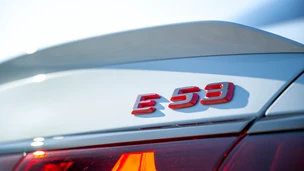Toyota's third Yaris, launched in 2011, was criticised for being less adventurous than the previous two models, and for lagging behind many other superminis in several areas. The latter point was addressed in 2014, when Toyota's European division got to work on the previously substandard interior. Engine noise was also reduced, the suspension was reworked in an attempt to improve the ride and handling, and the front end was redesigned to make it look more like the Aygo city car.
The Yaris is available in three- and five-door body styles. There are 1.0-litre and 1.33-litre petrol engines, a 1.4-litre diesel and a 1.5-litre petrol-electric Hybrid. The 1.33 has the option of an automated manual gearbox and no clutch pedal, while the Hybrid has a CVT automatic.
Performance
The fastest Yaris, though only the third most powerful, is the diesel, whose 10.8-second 0-62mph time beats those of the 1.33 and the Hybrid by about a second. Of these, the 1.33-litre requires the most work if it's to be driven quickly, though it helps that its six-speed manual gearbox has quite close ratios, so there isn't a "no man's land" between any two gears.
The performance of the 69bhp 1.0-litre cars is very leisurely. Acceleration from 0-62mph takes more than 15 seconds, and this isn't the engine to go for if you intend to do a lot of long runs. If, on the other hand, you intend to use your Yaris as an unusually roomy city car and not venture on to the open road very often, the 1.0-litre might be the ideal choice.
Ride and Handling
The handling is appropriate for a non-sporty supermini. Easy to drive through corners on most country roads.
The ride quality of the Yaris was good back in 2011 and the 2014 update has made it slightly better. Soft springing means that it copes well with large bumps, though it doesn't deal so well with small ones, and badly-surfaced roads make it shake quite badly. The handling is appropriate for a non-sporty supermini. Easy to drive through corners on most country roads, the Yaris becomes vague if you try to push it hard over crests. Customers who weren't interested in buying a hot hatch are unlikely to have a problem with this. Petrol models can be difficult to get going from a standstill, which isn't helpful in urban driving. The major controls are firm, and all of them require similar effort to use.
Interior and Equipment
Ian Scott Watson, the man who introduced twice World F1 Champion Jim Clark to motor racing, rated the first-generation Yaris as his favourite car.
Although it's by no means the largest supermini on the market, the Yaris is very roomy, and in particular has plenty of space in the rear. Transporting four large adults is a much more practical proposition than it is in some rival cars. Luggage capacity with the rear seats in place is competitive with the Ford Fiesta, Renault Clio and Vauxhall Corsa (all of them longer than the Yaris) at 286 litres. Fold down the seats and the volume increases to 768 litres. Interior quality of the earlier cars was very suspect, but since mid-2014 it has been much better. It's very conventional, though. In particular, the original placement of the instruments in a cubby hole in the centre of the dashboard was abandoned for the third generation. The range starts with the Active, which has steel wheels and no air-conditioning. The Icon is much better equipped, with alloy wheels, air-conditioning, front foglights, Bluetooth connectivity and the Toyota Touch 2 multimedia system. The Sport has larger wheels, LED daytime running lights, DAB digital radio and disc rather than drum brakes at the rear, while the Excel has cruise control, dual-zone climate control, part-leather seats and automatic headlights and wipers. Oddly, only the Excel has electric windows in the rear - back-seat passengers who want some air in the cheaper models have to wind down the windows themselves.
Cost
The Hybrid is more expensive still, but its green figures are spectacular.
Every Yaris has combined fuel economy of over 50mpg, and CO2 emissions for most of them are under 120g/km. Of the conventional models, the diesel is by far the best bet here, at 74.3mpg and 99g/km, though it's a lot more expensive to buy than an equivalent 1.33. The Hybrid is more expensive still, but its green figures are spectacular. In the best case, a Hybrid Icon averages 80.7mpg on the EU test and has a CO2 rating of 75g/km. Others come close to this, but the Icon is the only one to qualify for a 100 per cent discount for the London congestion charge. Benefit In Kind taxation is currently set at 5 per cent, though this will rise to 9 per cent in April 2015. Ratings for the other Yaris Hybrids will increase from 11 per cent to 13 per cent at the same time.
Our Verdict
To the possible disappointment of fans of the original model, today's Yaris is a very conventional supermini and by no means the best car in its class. The 2014 modifications have, however, made it better than it was, and if you're just looking for A-to-B transport there's very little to complain about, especially if you regular carry more than one passenger. The diesel's combination of the best performance and second best fuel economy in the range is very tempting, though if you don't drive many miles each year the cheaper petrol models may be more suitable. The Hybrid is costly to buy but very cheap to run and should be of particular interest to business customers.




